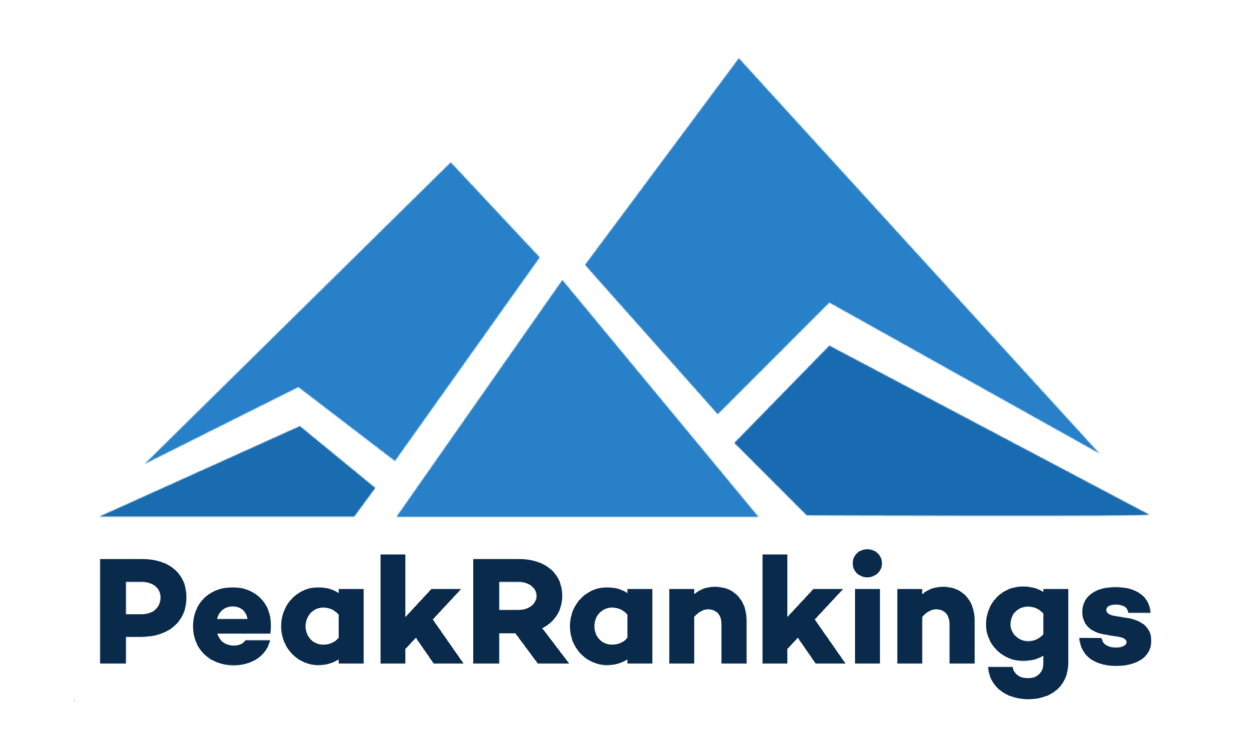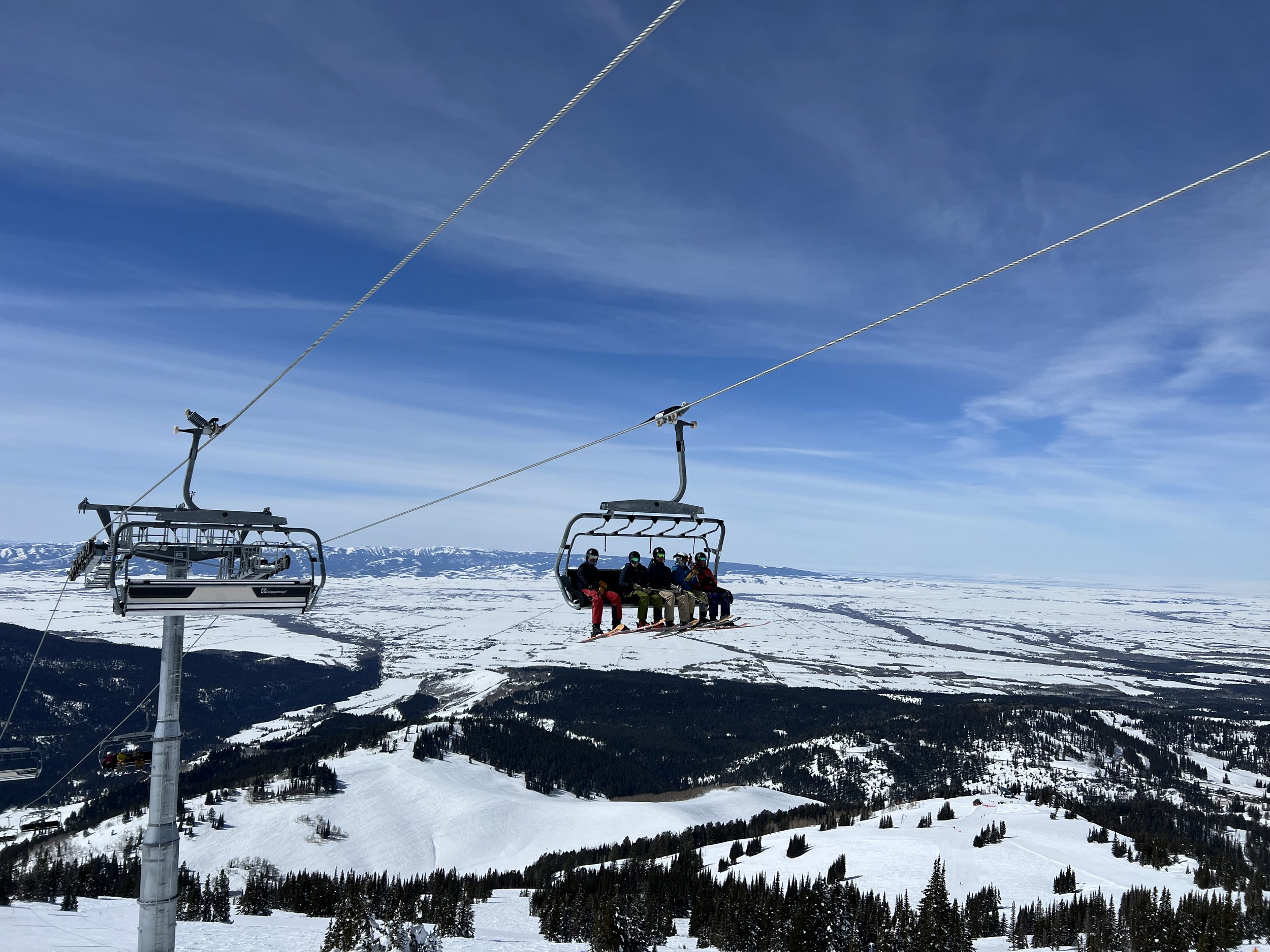Mountain Review: Grand Targhee
MOUNTAIN SCORE
CATEGORY BREAKDOWN
See our criteria9
Snow:
9
Resiliency:
6
Size:
7
Terrain Diversity:
7
Challenge:
7
Lifts:
9
Crowd Flow:
3
Facilities:
7
Navigation:
7
Mountain Aesthetic:
GOOD TO KNOW
1-Day Ticket: $113-$135
Pass Affiliation: Mountain Collective
On-site Lodging: Yes
Aprés-ski: Limited
Nearest Cities: Jackson Hole (1.5 hrs), Salt Lake City (4.5 hrs)
Recommended Ability Level:
+ Pros
Excellent snow quality
Incredible glade terrain
Consistent conditions
Limited crowds
Local feel
– Cons
Modest footprint and vertical drop
Perennially foggy conditions
Limited expert terrain
MOUNTAIN STATS
Lifts: 6
Trails: 97
Beginner: 10%
Intermediate: 70%
Advanced/Expert: 20%
RECENT ARTICLES
VIDEO
Mountain Review
Looking for a wild, remote ski vacation that doesn’t feel corporatized? Grand Targhee may be the place for you. Nestled within an isolated national forest, Grand Targhee is located in far-west Wyoming—and is only accessible by driving through Idaho first. The resort offers a distinctive vibe and incredible snow, but why isn’t it as popular as other destinations in the Northern Rockies—and just across North America in general?
Located in far-west Wyoming, Grand Targhee offers a distinct, isolated skiing experience.
Snow and Resiliency
Perhaps where Grand Targhee stands out most is in its snow. The resort benefits from some of the most consistent snowfall in North America, typically seeing plentiful accumulation throughout most parts of the season. While the quantity may not be quite as extraordinary as that of the resorts in Utah’s Little Cottonwood Canyon, Targhee’s accumulation is particularly light and dry, allowing for effortless powder runs. Targhee is one of the most reliable early-season resorts out there, with good storms starting in November and the resort often opening 100% of its footprint by the last week of December. Warm spells common to some competitors are not typically the case at Grand Targhee—the resort consistently stays below freezing until at least late February, making freeze-thaw cycles less common here. However, March and early April are different stories; these somewhat warmer and sunnier times do tend to be a bit less consistent than the earlier months.
Grand Targhee is a chiefly west-facing resort, although a significant minority of slopes either face north or south. Targhee’s north-facing slopes enjoy the best lift-serviced conditions for a variety of reasons; chief among these include exposure that blocks out the sun, preventing snow melt, as well as wind patterns that typically blow snow into the area. But unless it’s a particularly bad snow year, essentially all terrain tends to remain in good shape throughout the core season, with variable conditions not starting in earnest until March.
TRAIL MAP
Fog and Mountain Aesthetic
Grand Targhee’s snowfall may be quite consistent, but the resort’s unique climate conditions come with one less-than-ideal side effect throughout the core season: heavy fog. Low-visibility conditions can often manifest for hours, if not entire days, with truly clear skies rare. If you’re driving up from sunny weather in Idaho, don’t be fooled—the fog often gets trapped in Targhee’s mountains, meaning that clear skies on the access road do not translate to a sunny day at the resort.
But on days when Grand Targhee is clear, the resort offers breathtaking views into other mountain ranges and the expansive, profoundly flat interstate valley below. The Idaho town of Driggs—which is at the base of the Tetons nearly 4,000 feet below the resort summit—is quite a sight to behold, and when it’s visible, it makes the resort feel a lot taller than it really is. But Targhee’s best views arguably exist from the highest reaches of the resort; if one is at the top of Fred’s or Peaked Mountains, a look over the backside gives way to some of the most iconic peaks in the Teton Range, including Grand Teton itself.
On the relatively rare event of a clear day, Grand Targhee offers breathtaking views of the surrounding mountains, including the Teton Range.
Glade Terrain
For those who like glade terrain, Grand Targhee is a great choice. The resort’s footprint seems to sit in an almost perfectly near-treeline environment, with light-to-moderate glades and rolling hills making up most resort areas. Only a few runs near the bottom are truly the traditional tree-cut trails you might find at your local hill. Grand Targhee’s sporadically gladed nature results in a unique skiable footprint, where very few lines feel truly alike.
Vertical Drop
But part of the reason for this consistently near-treeline footprint is due to a notable Grand Targhee drawback: the resort’s modest vertical drop. With a lift-served vertical descent of 2,200 feet—and just 2,000 feet from the summit to the main base—Grand Targhee is about one to two-thousand feet less prominent than the best known destination ski resorts in the country—and more on par to some regional resorts in this regard. None of Targhee’s runs are particularly long, but at least across some resort areas, runs do offer terrain distinctiveness from top to bottom, with short bowl sections at the top transitioning into glades and then true below-treeline trails at the bottom.
Grand Targhee may be most well suited to guests of intermediate proficiency, with a diverse array of blue runs to be found off of every lift.
Beginner Terrain
Grand Targhee does offer some beginner terrain options, but they are limited. On the plus side, the resort’s lower-mountain Shoshone pod is exclusively designed for beginners, hosting only green trails and featuring neat adventure zones, including glades, that kids will love. The design of this pod makes for an isolated environment that rarely attracts more aggressive skiers and riders. But to enjoy the rest of the resort, guests will have to progress quickly. After Shoshone, there’s just one green trail within the rest of Grand Targhee—and it’s a long, flat traverse down from the Dreamcatcher chair.
Intermediate Terrain
Grand Targhee is perhaps best suited for those of intermediate proficiency, with a wide range of groomed blue cruisers off every lift. Several blue trails start out as wide open bowls in their uppermost portions, making for much more distinctive slopes than many competitors for this ability level. These runs offer fantastic views when the resort is clear. A few blue trails are lightly gladed, but even for the ones that aren’t, it’s easy to dip into the trees off the side of the trail, making the resort great for progression in the woods. It is worth noting that Grand Targhee doesn’t always groom all of their intermediate-rated runs—especially when it comes to the glades—so if it hasn’t snowed in a few days, they might bump up and be more akin to what some might expect from advanced-level runs.
RECOMMENDED SKIS FOR GRAND TARGHEE
NOTE: We may receive a small affiliate commission if you click on the below links. All products listed below are unisex.
Recommended intermediate ski
Recommended advanced ski
Recommended high-alpine ski
Recommended powder ski
Advanced Terrain
While their black-diamond trails make up a minority of the slopes on paper, Grand Targhee is a pretty solid resort for advanced visitors as well. The resort’s single-black terrain includes some short but rather demanding mogul runs and plenty of glades of varying widths. A few blacks receive consistent grooming as well, making for some seriously fast runs when conditions allow.
Expert Terrain
Experts will also find limited—albeit fairly daunting—terrain options at Targhee. The resort’s toughest trails involve truly precarious terrain, with an extensive cliff band extending the full length of the double-black-diamond runs off the Sacajawea and Colter chairs. In order to complete most of these runs, skiers and riders will either need to huck these cliffs or risk a core shot by straightlining down. With that said, these cliffs don’t appear until about halfway down these runs, and the resort does provide guidance for guests to bail out of the area right before they occur.
Grand Targhee is a better mountain for advanced guests than it may seem on paper, with diverse array of mogul runs, glades, and groomed steeps.
Terrain Parks
Grand Targhee isn’t exactly a world-class freestyle destination, but depending on when you visit, it does have some decent terrain parks in lower-mountain areas. Guests will find small boxes, rails, and jumps off the beginner Shoshone lift, as well as medium and large features under the Dreamcatcher chair (but also technically accessible from the Shoshone lift). However, these builds do typically take a while to materialize each winter, and if you visit earlier in the season, there’s a chance they won’t be up and running yet. But then again, if you’re going out west to ride terrain parks, Targhee probably won’t be your first choice in the first place.
Lifts
Grand Targhee’s lift setup is pretty good. The mountain’s three high-speed lifts, the Dreamcatcher quad, Sacajawea quad, and Colter six-pack, cover nearly all of Targhee’s main-mountain footprint, while the slower but shorter Shoshone quad covers the beginner trails. The slow, fixed-grip Blackfoot quad is technically fully redundant to the Dreamcatcher chair; however, this lift serves an important purpose, providing convenient lappable access to Grand Targhee’s northernmost footprint and allowing guests to avoid an irritating catwalk and magic carpet ride to return to the main base.
Grand Targhee features a mostly modern lift setup, with nearly the entire footprint serviced by high-speed lifts.
Colter Expansion Terrain
A considerable portion of Grand Targhee’s terrain—including all runs on the northern side of Peaked Mountain—used to be served exclusively by snowcat. But two winters ago, Grand Targhee replaced that snowcat service with the Colter six-pack we mentioned earlier. Adding the Colter lift has expanded Grand Targhee’s lift-served footprint by approximately 600 acres, and in the process, transformed the resort. The Colter lift tops out 900 feet higher than the Sacajawea lift with which it shares Peaked Mountain, and the expansion makes the resort feel much bigger than it used to be. The new six-pack lift is fast and comfortable, with more than enough capacity for the area. In addition, this newly-available footprint offers what’s arguably the best view of the Teton Range at the resort on clear days. If it’s clear out, be sure to check out the intermediate Rolling Thunder trail for stunning vistas that last most of the run.
The Colter lift-service expansion has come with one casualty: the discontinuation of guided cat skiing at Grand Targhee. While only a minuscule fraction of Targhee guests ever paid for these tours, they offered a unique opportunity to ski untouched powder for an entire day. This terrain has now been democratized for the broader Targhee ticket and pass-holding audience, but it gets tracked out a lot faster than it used to.
While the Colter expansion reduced the amount of terrain requiring a hike to access, there remain a few short hikes which often provide access to the best snow on the mountain.
Hike-to Terrain
A small portion of Targhee’s footprint remains hike-to, even following the Colter expansion. The Mary’s Nipple zone (yes, it’s literally called this) requires a short uphill hike, but it holds untouched snow for days and is a great option for powder bowl skiing if there’s been a recent storm drought. Following the Colter lift installation, this area is accessible from a much shorter hike than it used to be—and if you go from the Peaked Mountain side, the hike is five minutes tops. It is worth noting that the 20-minute hike from the Dreamcatcher side is still open, in case you’re looking for a harder uphill workout. But if you get to that entrance, don’t be fooled; it doesn’t take you to any terrain that the much shorter hike doesn’t also access. A small minority of Targhee’s other runs require hiking to get in or out of, but these areas tend to offer the best snow preservation at the resort.
Ease of Navigation
Besides the hikes, getting around Grand Targhee is straightforward enough. The resort offers clear, well-placed signage and a forgiving trail system. But Targhee does have a couple of annoying navigational situations; a handful of flat traverses are needed to get in or out of key areas, and getting from the base of the Shoshone lift to the main base area requires either a short walk or a ride up a magic carpet. In addition, if you do get lost, cell service around the resort can be limited.
While the lodges at Grand Targhee’s base plaza are quite nice, facilities are extremely limited elsewhere on the mountain.
On-Mountain Facilities
Grand Targhee isn’t the most built-up resort in the world, and perhaps its biggest drawback versus the high-end destinations is its lack of on-mountain facilities. Despite the recent lift-served expansion, indoor lodges outside the main base are nonexistent. This can make it a bit of a haul to get inside from the furthest mountain areas. This all being said, the lodges at the base plaza are quite nice, with multiple places to stop in, plenty of capacity, high-quality food, and surprisingly reasonable prices. And although indoor shelter may not be a thing in mid-mountain areas, there are at least a few outhouses scattered around the more remote lifts for those needing a bathroom break.
Crowds
Grand Targhee is much more off the beaten path than its better-known Rockies competitors, and serious crowds are rare. However, short waits—albeit tolerable ones—can build up on weekends and holidays. The biggest lines typically affect the Dreamcatcher lift, which provides the only direct base-to-summit transportation and lacks convenient alternatives. That being said, the Colter expansion has helped relieve some of the congestion here in recent years.
RECOMMENDED SNOWBOARDS FOR GRAND TARGHEE
NOTE: We may receive a small affiliate commission if you click on the below links. All products listed below are unisex.
Recommended intermediate board
Recommended advanced board
Recommended high-alpine board
Recommended powder board
Pass Affiliation Status
Speaking of low crowds—despite Grand Targhee’s remote location, modest vertical drop, and limited on-mountain facilities, we’d argue that’s not why the resort isn’t as popular as other well-known destination competitors. In fact, we’d say there’s one primary reason Grand Targhee doesn’t get as much traffic as its other Rockies brethren—its absence from both the Epic and Ikon Passes. The resort is a member of the two-day multi-resort Mountain Collective Pass, but while exact sales numbers aren’t public, it’s probably fair to say this pass is a small fish compared to the two giants we just mentioned. The North American ski industry has really been moving to a world where the resorts that are considered “destinations” are exclusively those that are on the Epic or Ikon Passes, and while its visitors certainly won’t mind the lower crowds, Grand Targhee is sadly a prime example of that.
Getting There
When it comes to getting to Grand Targhee, most guests will want to fly through either the Jackson Hole or Idaho Falls airport. Both airports are approximately an hour and a half from the resort. The mountain passes from both airports can close periodically, but from our experience, Jackson is the slightly more reliable option. Private shuttle services provide direct transportation to the resort from the Jackson airport, but the Idaho Falls airport lacks such services.
The resort is also within driving distance of Salt Lake City, which is approximately four-and-a-half hours from the resort with no traffic. Boise, which is Idaho’s largest city, is also about a five-and-a-half-hour drive.
Grand Targhee suffers from limited parking capacity, though paid spots are nearly always available near the base.
Parking
One problem Grand Targhee shares with its destination competitors is in parking capacity. Although recent capacity expansions have helped, Grand Targhee’s parking lots are relatively small, even for the resort’s modest visitation. While free parking is available, it can be hard to come by, especially on powder days or peak holidays. New paid parking near the base is pretty much always an available option, costing $10 per day on weekdays and $20 on weekends and holidays, but this isn’t exactly an ideal thing to be spending money on.
Lodging
If you don’t want to deal with parking, Grand Targhee offers a handful of upscale but down-to-earth slopeside lodging options at the resort base. Select accommodations come with access to special Grand Targhee amenities such as pools, hot tubs, and exercise facilities.
A few more reasonably-priced options exist down the valley in Alta, Wyoming and Driggs, Idaho; the Teton Valley Bus system provides transit between these towns and the resort.
Après-Ski
The après vibe at Grand Targhee is limited compared to most other destinations, but there’s still a bit to do in the base village. A handful of lively restaurants and bars can be found at the resort center, and live music occasionally takes place on weekends and holidays.
With that said, activities down the valley are extremely limited. Driggs is a pretty big town, but there isn’t much to do there due to significant liquor restrictions and almost nonexistent nightlife.
Grand Targhee will appeal most to intermediate and advanced guests looking for a more laid back, remote ski resort with fewer crowds than destination competitors.
Verdict
So Grand Targhee is best for intermediate-to-advanced visitors looking for a Teton Range resort experience but not quite up to the proficiency to truly appreciate Jackson Hole. The mountain may not be the longest, hardest, or sunniest destination out there, but its incredible snow preservation, lack of lift lines, and local, remote feel make it a surprisingly viable alternative to better-known competitors.
Pricing
Grand Targhee’s lift tickets aren’t cheap, but they do go for rates that aren’t exactly outrageous. While the lack of Epic or Ikon access may be a dealbreaker for some, the resort’s status on the Mountain Collective Pass shouldn’t be taken for granted, and the resort is a solid place to stop for a few days on a Northern Rockies road trip.


























If you plan on visiting certain resorts on the Ikon or Mountain Collective Passes, now is your last time to secure access at a remotely reasonable rate.